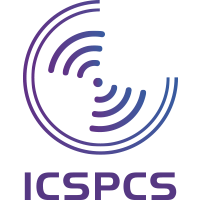
KEYNOTE SPEAKER 1
Prof. Huiming Wang
IEEE Senior Member,Xi'an Jiaotong University, China
Biography: Huiming Wang is a Professor and Doctoral Supervisor at the School of Information and Communications Engineering and the School of Cyber Science and Engineering. He also serves as the Associate Director of the Key Laboratory of Intelligent Networks and Network Security of the Ministry of Education. He has been recognized as a National Young Talent and is an ESI Highly Cited Researcher globally. Among his numerous honors are the IEEE ComSoc Asia-Pacific Outstanding Young Researcher Award, the National Excellent Doctoral Dissertation Award, the inaugural Youth Science and Technology Award of the China Institute of Communications (CIC), and the Shaanxi Youth Science and Technology Award. He has been selected for the Ministry of Education's "New Century Excellent Talents Support Program" and Xi'an Jiaotong University's "Young Top-Notch Talent Support Program." Prof. Wang leads the Shaanxi Science and Technology Innovation Team and is a core member of the Shaanxi Sanqin Scholars Innovation Team. He has supervised recipients of the National Excellent Doctoral Dissertation Award (CIC) and the Shaanxi Provincial Excellent Doctoral Dissertation Award in consecutive years (2018 and 2019). He holds senior membership in the Institute of Electrical and Electronics Engineers (IEEE), the Chinese Institute of Electronics (CIE), and the China Institute of Communications (CIC), where he also serves as a member of the 5th Youth Working Committee. In addition, he is a council member of the Shaanxi Society of Signal Processing. He serves on the editorial boards of several prestigious journals, including the international flagship IEEE Transactions on Communications (Impact Factor: 5.67), the domestic authoritative journal SCIENCE CHINA Information Sciences, and the Chinese journal Scientia Sinica Informations. He has also chaired or served as a member of technical committees for multiple international conferences. Currently, he is a member of the Science and Technology Committee of the Shaanxi Provincial Committee of the Jiusan Society and an expert of the Shaanxi Jiusan Society Think Tank for Participation in and Deliberation of State Affairs...
KEYNOTE SPEAKER 2
Prof. Shuwen Xu
IEEE Senior Member, Xi'an University of Electronic Science and Technology, China
Biography: Shuwen Xu (IEEE Senior Member) was born in Huangshan city in Anhui, China. He received the B.Eng. and Ph.D. degrees, both in electronic engineering, from Xidian University, Xi’an, China, in 2006 and 2011, respectively. He worked at the National Laboratory of Radar Signal Processing, Xidian University, after that. He worked as a visiting professor in Mcmaster University in 2017 and 2018, Canada. He is currently a professor with the National Laboratory of Radar Signal Processing, Xidian University. He is also the vice director of National Collaborative Innovation Center of Information Sensing and Understanding and the Director of radar signal processing and data processing Department. His research interests are in the fields of radar target detection, statistical Learning, and SAR image processing...

